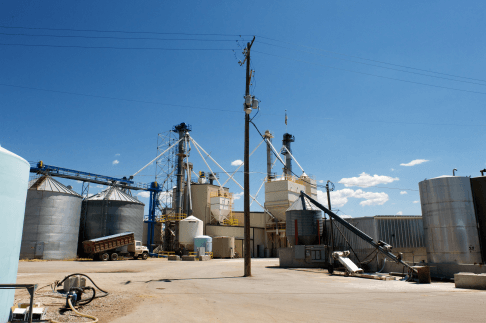In the feed mill industry, traceability is the idea of recording and documenting all ingredients and drugs that are used in your animal feed. Maining quality feed mix for your animals involves tracing the drugs and ingredients that go into your animal feed will help you and your team better regulate the quality of your products. If you deviate from established sequencing guidelines or use drugs and ingredients that may be harmful to your animals, you may need to recall your products down the line. You could end up endangering the lives of your customers, not to mention the legal implications and the public relations nightmare that may follow suit.
It’s best to simplify the mixing and production process as much as possible, so you don’t have to worry as much about ruining large batches of feed, processing your feed the wrong way, or feeding your animals harmful or dangerous ingredients. Using the latest sequencing and processing guidelines, you can master the art of mixing and grinding to make sure your animals stay as healthy as possible. Rethink your grain handling approach to traceability with these production tips.
HOW DOES TRACEABILITY AFFECT YOUR BUSINESS?
All feed mills are required to trace the ingredients and drugs used in the production process in case a product recall should occur. If toxic or harmful products make their way to consumers, you will need to present documents detailing the production process, so you can get to the bottom of the outbreak and prevent similar incidents from happening in the future.
Feed mills that use medicated ingredients and drugs in the production process have been required to trace these ingredients since 1986. The Food and Drug Administration must approve of these drugs and ingredients to prevent the spread of illness and disease.
As time went on, the government became adamant about preventing food-borne illness and disease, so it created the Food Safety Modernization Act(FSMA). The FSMA led to the implementation of science-based food production techniques that are designed to limit cross-contamination and the spread of food-borne illness and disease.
Your feed mill needs to accurately record and trace the history of all ingredients used in the production process. You can use old-fashioned paper records or a digital tracking system to keep track of these records over time.
TIPS FOR SIMPLIFYING TRACEABILITY
To simplify the traceability process, use these tips to limit cross-contamination and food-borne illness in your facility.
ADHERE TO THE LATEST SEQUENCING GUIDELINES
You need to regulate the sequence of your products and ingredients to avoid cross-contamination. You need to be aware of the properties of the drugs you’re using in the mix as well as which ingredients may be sensitive to cross-contamination. Based on the nature of your ingredients, you need to run them through certain pieces of equipment at different times to prevent the spread of germs and illness between batches. This is what’s known as batch sequencing.
Different ingredients and drugs fall into different categories based on specific properties and how they affect or react to different ingredients. If you manufacture a batch of feed right after mixing a batch with harmful ingredients, the newest batch may contain residue from the first batch, thus leading to cross-contamination. For example, you cannot run dairy batches after batches containing category II drugs, unless you follow certain cleaning procedures, which can be time-consuming and expensive. Category II drugs are those that can lead to side effects if the animal goes through withdrawal. Horses are also considered extremely sensitive to certain ingredients and drugs.
Mastering the art of batch sequencing will also help you increase efficiency in the supply chain. Maximize production by running certain batches through different pieces of equipment at the same time, while minimizing the chances of cross-contamination. You can produce more feed in less time, instead of letting certain pieces of equipment sit idle.
MANUFACTURE THE LEAST TOXIC MATERIALS FIRST
To prevent the spread of germs and food-borne illness, it’s best to manufacture or process the least toxic ingredients and batches first, so they are not exposed to hazardous ingredients. Process feeds and batches with the most toxic ingredients or drugs should be processed last.
This will help you limit residue and cross-contamination inside your supply chain. You can then finish the day by cleaning your equipment, so you can repeat the process all over again the next day.
AVOID FLUSHING
Flushing is the idea of running a batch of feed in between two others to essentially disinfect the equipment, so the next batch doesn’t contain harmful ingredients. Flushing can lead to large volumes of waste. The in-between batch of feed may be unfit for animal consumption, so all those ingredients will usually go to waste.
It’s best to avoid flushing whenever possible. Find a way to adjust your batch sequencing so that flushing is not required. You can also clean your equipment in between batches to reduce cross-contamination.
Keep these tips in mind to improve the traceability process. Your company won’t have to work as hard to trace individual products and ingredients if you follow the latest sequencing guidelines. Contact Halverson Company to learn more about our feed mill construction services.

